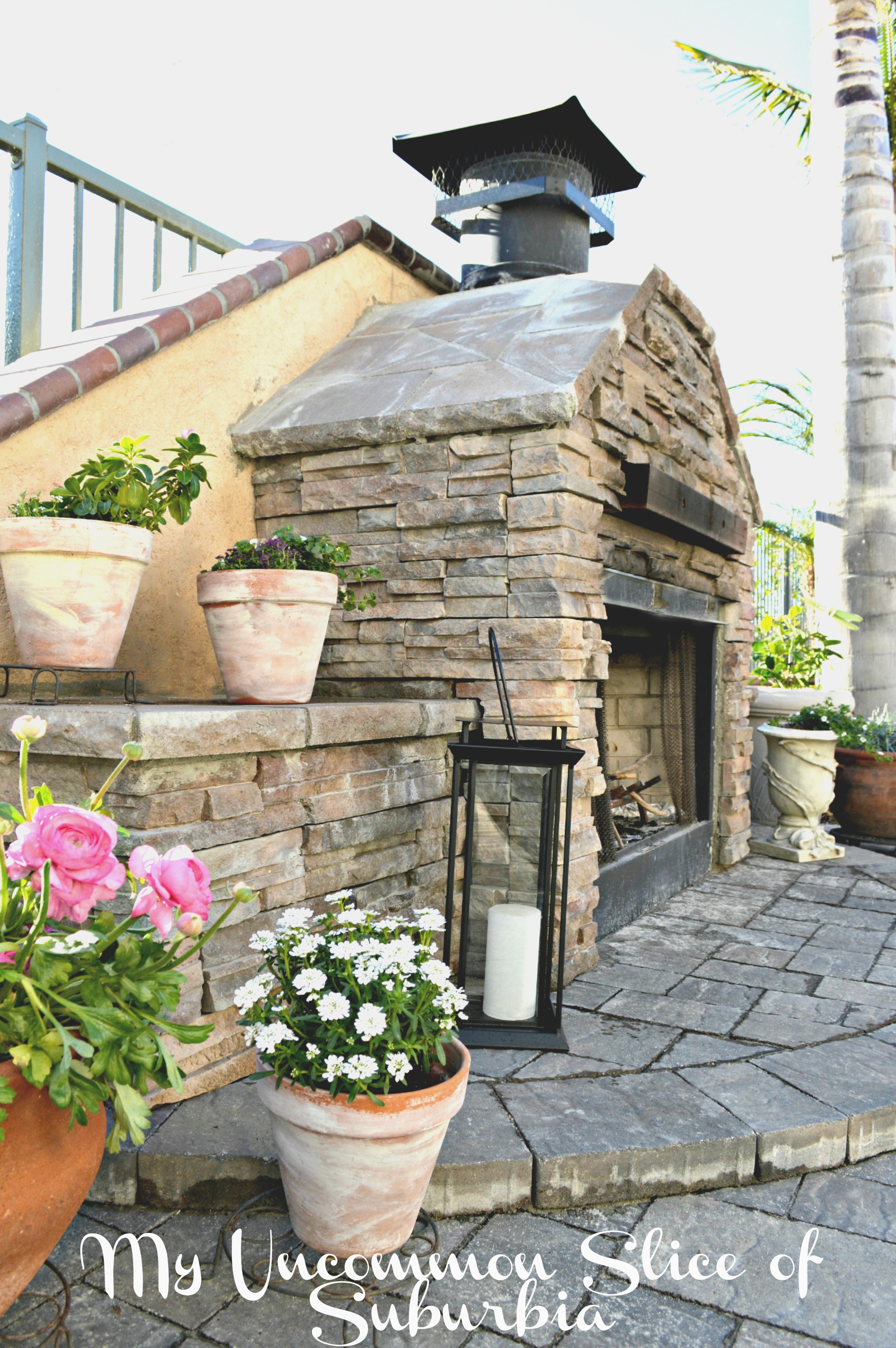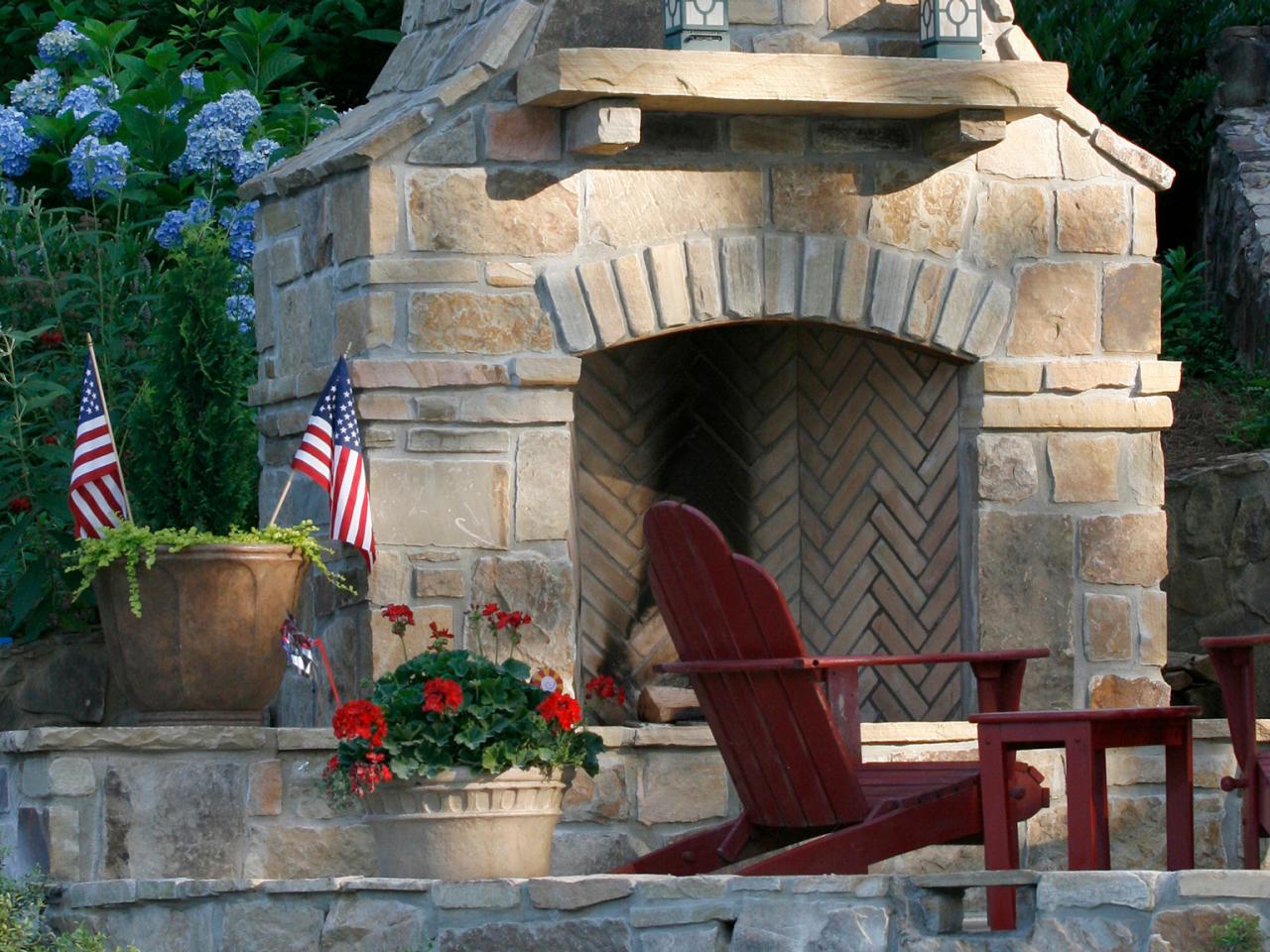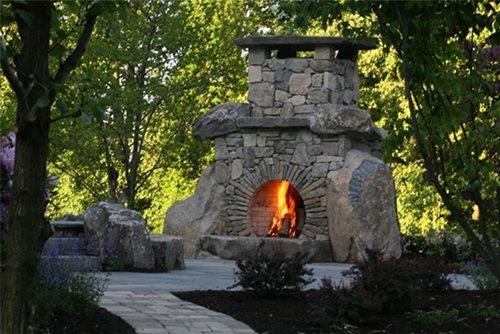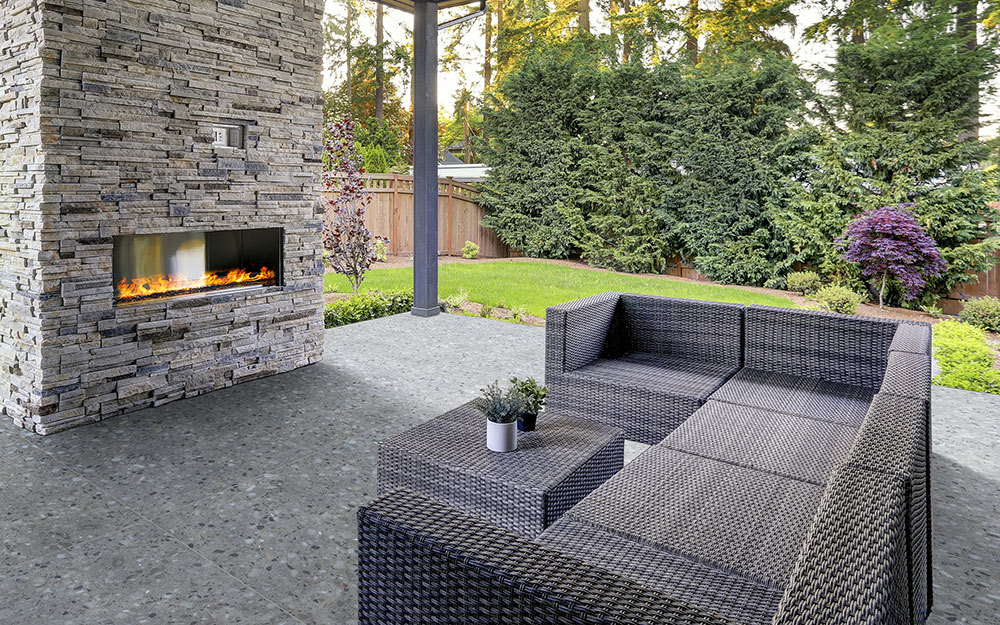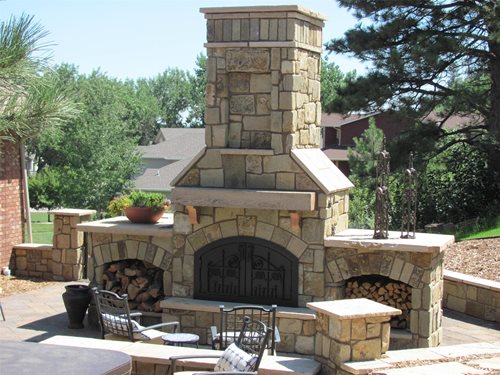A stacked stone outdoor fireplace creates a natural, rustic focal point for any backyard living space. Unlike uniform manufactured stone, stacked stone showcases irregular shapes and textures that blend seamlessly with outdoor environments. These fireplaces provide warmth, ambiance, and a gathering spot for family and friends while requiring minimal maintenance. Whether built as a standalone structure or incorporated into an outdoor kitchen, stacked stone offers durability and visual appeal. Here are several aspects of stacked stone outdoor fireplaces to help you plan your perfect backyard retreat.
Choosing the Right Stone Material
Stacked stone fireplaces can be constructed from various natural stones, each offering distinct characteristics. Fieldstone provides an organic, timeworn look with its rounded edges and earth-toned colors, ideal for cottage-style landscapes. Limestone offers a more uniform appearance with soft neutral hues that complement traditional architecture. For a dramatic statement, slate’s layered texture and darker tones create striking visual contrast against greenery.
The stone’s thickness affects both aesthetics and structural integrity. Thicker stones (3-5 inches) create a robust, substantial look but require more mortar and skilled installation. Thinner veneer options (1-2 inches) work well for cladding over concrete block cores while maintaining a natural appearance. Consider the stone’s weathering properties—denser materials like granite withstand freeze-thaw cycles better than porous sandstone in colder climates.
Local stone varieties often provide the most harmonious look, blending with regional landscapes and reducing transportation costs. However, imported stones like Mexican beach pebbles or Italian travertine offer unique colors and textures for specific design visions. Always request samples to see how stones appear in different lighting conditions before making final selections.
Design Considerations for Structure and Function
The fireplace’s size should balance with your outdoor space—typically 4-6 feet wide for comfortable seating arrangements. A shallow firebox (16-20 inches deep) works well for ambiance, while deeper designs (24+ inches) accommodate larger fires for cooking. Include a raised hearth (12-18 inches high) for seating and safety, ensuring it extends at least 16 inches beyond the firebox opening.
Consider the fireplace’s placement relative to wind patterns and views. Position the back or side against prevailing winds to minimize smoke issues while framing desirable vistas. Incorporate built-in features like log storage niches, side counters for food prep, or even a pizza oven for multifunctional use. The chimney height should extend at least 2 feet above the highest point within 10 feet to ensure proper draft.
Design elements like arched openings, asymmetrical stone patterns, or integrated seating walls personalize the structure. A dry-stacked appearance (minimal visible mortar) creates a rustic aesthetic, while tighter joints with colored mortar suit more formal designs. Consult local building codes for required clearances from structures and property lines before finalizing plans.

Construction Methods and Foundation Requirements
A proper foundation is critical for stacked stone fireplace stability. Concrete footings should extend below the frost line (typically 12+ inches deep) with a reinforced slab at least 6 inches thick supporting the entire structure. For sloped yards, retaining walls may be necessary to create a level base. The firebox requires fire-rated materials like refractory brick or concrete board to withstand high temperatures.
Traditional mortar construction offers the most permanent solution, with stones set in type N or S mortar for weather resistance. For DIY-friendly options, modular interlocking stone systems with hidden fasteners simplify installation. Dry-stack methods (without mortar) work only for certain stone types and require precise fitting—often needing professional expertise for structural integrity.
Construction should progress from the foundation upward, with each course staggered for strength. Metal lintels support openings, while stainless steel anchors secure stone to the core structure. Apply sealant to porous stones after completion to prevent staining and moisture absorption. Allow at least 48 hours curing time before first use to ensure mortar strength.
Maintenance and Long-Term Care
Stacked stone fireplaces require relatively low maintenance compared to other outdoor materials. Annual inspections should check for cracked mortar joints, loose stones, or firebox deterioration. Repoint mortar as needed using a matching type, typically every 3-5 years depending on climate exposure. Remove soot buildup from the firebox with a stiff brush and mild detergent solution.
Protect the stone’s appearance by clearing debris like leaves from horizontal surfaces where moisture can pool. In freezing climates, cover the fireplace during winter if unused to prevent water infiltration and cracking. Avoid pressure washing, which can erode mortar and damage softer stones—opt for gentle rinsing instead.
For fireplaces used frequently, install a spark arrestor on the chimney to prevent ember escape. Keep the surrounding area clear of flammable materials within at least 3 feet. Consider applying breathable stone sealant every few years to maintain water repellency without trapping moisture within the stone.
Enhancing Ambiance with Lighting and Accessories
Strategic lighting transforms a stacked stone fireplace into an evening focal point. Recessed LED uplights in the base graze the stone’s texture, highlighting its natural contours. Low-voltage path lights around the seating area improve safety while maintaining a cozy atmosphere. For functional task lighting, install adjustable spotlights under eaves or pergolas to illuminate cooking surfaces.
Accessorize the hearth with weather-resistant elements like wrought iron log holders, stone side tables, or copper fire tools. Built-in niches can display decorative pottery or hold supplies like kindling and fire starters. Add comfortable seating with outdoor sectionals or stone benches arranged in a conversational U-shape around the fire.
For added warmth on chilly nights, incorporate outdoor-rated throw blankets in natural fibers stored in a nearby chest. A rustic firewood rack keeps logs dry and accessible while contributing to the organic aesthetic. Seasonal decorations like evergreen wreaths or autumn gourds personalize the space throughout the year.
Cost Considerations and DIY Feasibility
Professional stacked stone fireplace installations typically range from $3,000 to $15,000 depending on size and materials. High-end natural stone and complex designs occupy the upper range, while local stone with simpler layouts reduces costs. Prefabricated firebox inserts ($500-$2,000) can lower expenses compared to custom brick fireboxes.
DIY construction is possible for those with masonry experience, particularly with modular stone systems. However, improper foundation work or firebox construction poses safety risks. Realistically budget 2-3 times longer than professional timelines for DIY projects. Renting equipment like mortar mixers and stone cutters may offset some savings.
Cost-saving alternatives include using stone veneer for the visible surfaces with concrete block backing, or limiting stonework to the fireplace facade while using stucco or brick for side walls. Phasing construction—building the core one year and adding stone cladding later—can spread out expenses. Always obtain multiple quotes and verify contractor experience with stone fireplaces specifically.
How much heat does a stacked stone outdoor fireplace provide?
Stacked stone fireplaces radiate substantial heat within a 6-8 foot radius, with intensity depending on fire size and design. The stone’s thermal mass absorbs heat during burning and gradually releases it, providing lingering warmth after the fire dies down. For larger gatherings, choose a fireplace with a 36+ inch opening and taller chimney to increase heat output. Positioning seating approximately 4 feet from the hearth optimizes comfort—close enough for warmth but avoiding excessive heat exposure. In windy areas, incorporate a semi-enclosed design or windbreaks to prevent heat dispersion.
Can you cook on a stacked stone outdoor fireplace?
Yes, with proper design considerations. Incorporate a grill grate or adjustable cooking arm for direct flame cooking. For frequent use, include a metal or stone shelf beside the firebox for food prep. Pizza oven attachments can be integrated into the structure during construction. Avoid placing cookware directly on stone edges, as grease stains may occur. Always ensure the chimney height accommodates cooking smoke, typically 2 feet higher than standard designs. Clean cooking residues promptly to prevent stone discoloration.
How do you prevent smoke issues with an outdoor fireplace?
Proper chimney design is crucial—ensure it’s at least 24 inches taller than any structure within 10 feet. The flue should be 10% of the firebox opening area (e.g., 100 sq inch opening needs 10 sq inch flue). Position the fireplace so prevailing winds blow across rather than into the opening. Install a smoke shelf inside the chimney to deflect downdrafts. Avoid burning wet wood or overloading the firebox, which creates excess smoke. In problematic sites, consider adding a chimney cap or adjusting the firebox depth.
What’s the best mortar for stacked stone fireplaces?
Type S mortar (high-strength) is ideal for most stacked stone applications, especially in freeze-thaw climates. For areas with extreme weather, polymer-modified mortar increases flexibility and bond strength. When using irregular fieldstone, a mortar mix with larger sand aggregates (up to 1/4″) fills gaps better. Match mortar color to the stone’s dominant tone—light gray for limestone, tan for sandstone. For dry-stack appearances, use tinted mortar applied sparingly in recessed joints. Always dampen stones before applying mortar to prevent premature drying.
How long does it take to build a stacked stone fireplace?
Professional installations typically require 3-7 days, depending on complexity: 1-2 days for foundation work, 2-3 days for core construction, and 1-2 days for stone facing. DIY projects often take 2-3 weeks for novices working intermittently. Curing times add to the schedule—concrete footings need 7 days, mortar joints require 48 hours before light use. Weather delays are common, as masonry work shouldn’t proceed in temperatures below 40°F or during rain. Plan for additional time if incorporating special features like bread ovens or carved stone details.
Are permits required for outdoor stacked stone fireplaces?
Most jurisdictions require permits for permanent outdoor fireplaces, especially if over 3 feet tall or within 10 feet of structures. Requirements vary, but typically include footing inspections, clearance verification, and flue sizing approval. Some areas restrict wood-burning designs or mandate spark arrestors. Gas line installations always need licensed professional work and inspection. Check local ordinances regarding burn bans and emission standards before construction. Homeowner associations may have additional aesthetic guidelines about stone colors or heights. Always verify requirements before purchasing materials.
Outdoor Stone Fireplace – Landscaping Network
Related Posts:
- Stacked Stone Outdoor Fireplace
- DIY Small Outdoor Fireplace
- Outdoor Fireplaces Firepits
- Simple Brick Outdoor Fireplace
- Ideas For Outdoor Fireplaces On Patios
- Outdoor Fireplace Ideas Stone
- Outdoor Rock Fireplace Designs
- DIY Outdoor Fireplace Designs
- Outdoor Fireplace Ideas Deck
- Outdoor Cooking Fireplace Designs
